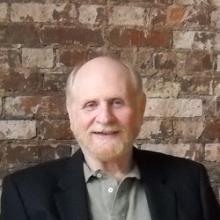What Is It
A trolley is approaching a track junction, and you happen to be standing by the switch. If you do nothing, the trolley will kill a number of innocent children playing on the tracks. If you throw the switch, it will kill only one fat man, who is sleeping on the tracks. The so-called Trolley Problem sheds light on many claims in moral philosophy: utilitarian positions (doing what's best for the greatest number), the difference between doing and letting happen (being more obliged to not cause harm than to prevent harm), and issues of "collateral damage" (killing one person to save others). John and Ken ride the trolley with Thomas Cathcart, author of The Trolley Problem, or Would You Throw the Fat Guy Off the Bridge: A Philosophical Conundrum.
Listening Notes
To start off the show, Ken presents the thought experiment referred to as the trolley problem. Say you’re on a trolley headed down a track towards five people. You can choose to switch tracks, and on the other track, there is only one person. John says his answer is obvious: he would choose to act to save the five at the loss of the one life. The two agree John’s answer is motivated by utilitarianism, a moral philosophy that aims to maximize the total benefit to all people.
John and Ken then welcome their guest, Thomas Cathcart, to the show. They begin by discussing the difference between the trolley problem and the footbridge case, where instead of switching tracks to save the five, you have to push a man off a bridge to stop the trolley. People’s intuitions usually make them say they would not push the man, even if they would sacrifice someone on another track. Thomas has been very interested in explaining what accounts for this difference. Ken suggests that our psychological mechanisms might explain our intuitive reactions to these cases.
Thomas believes the best way to explain the difference is by the notion of double effect. In the trolley problem, the direct effect of switching tracks seems to be saving lives, while the secondary effect is sacrificing a life. On the other hand, in the footbridge case, the direct effect of the questioned action is to kill a man. This stirs our moral intuitions against the action of pushing the man off the bridge. Ken argues that the cases are still equivalent: someone is going to die because of you in either scenario.
A caller raises the issue of how we respond if we are personally connected to the person we must sacrifice. All agree that this of course makes people much more hesitant. Thomas asks the caller how many more people would have to be on the track for him to be willing to sacrifice his own father to save them. Questions like these make our intuitions about the topic even more difficult to pin down. Ken and John end the show by noting that getting at real answers in moral philosophy is very hard because of cases where our emotions are involved.
- Roving Philosophical Reporter (Seek to 5:18): Caitlin goes to the Moral Cognition Lab at Harvard University, where scientists are studying what goes on in people’s brains when they are presented with trolley problems.
- 60-Second Philosopher (Seek to 49:15): Ian presents some thought experiments, both from his childhood musings and academic philosophy.
